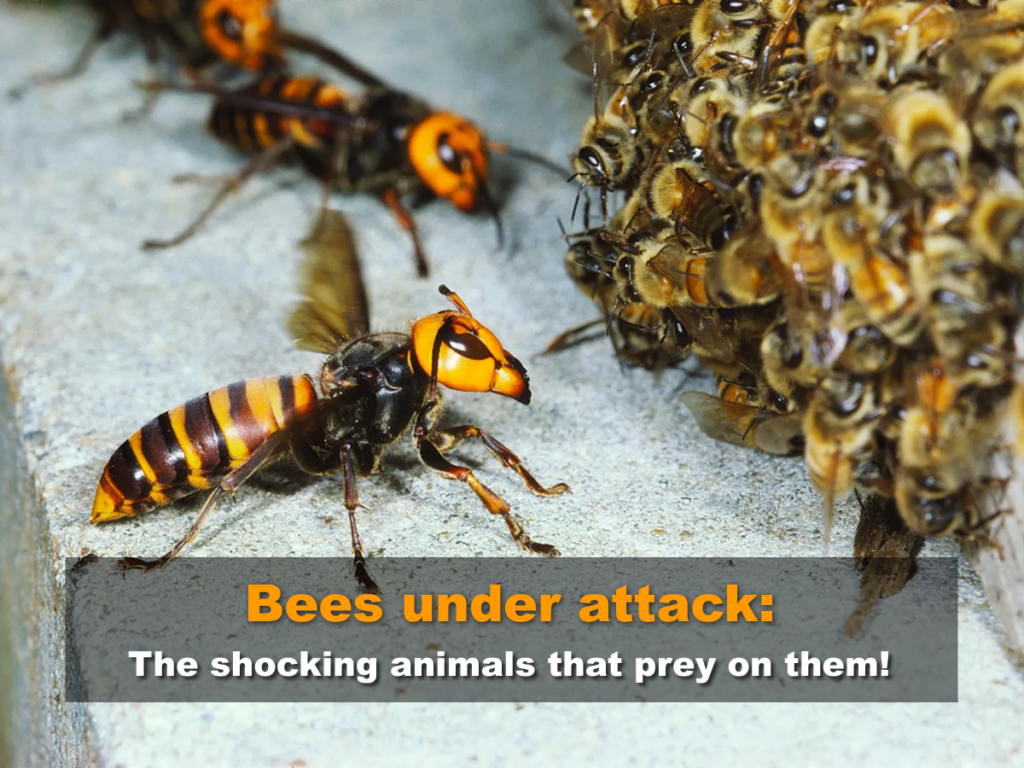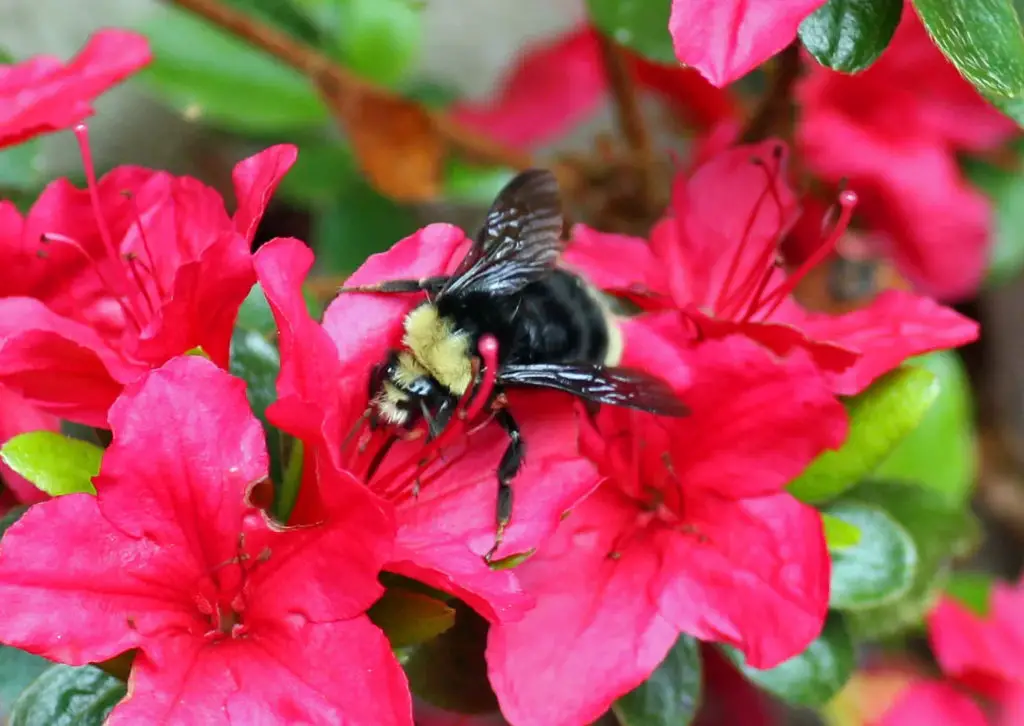Affiliate Disclaimer - As an Amazon Associate I earn from qualifying purchases.
It supports the website. So, Thank you
You might not think that a bee would make a tasty meal what with its stinger and all. But there are plenty of creatures in nature that would hasten to disagree with you and enjoy a bee-based meal. But who are these predators of bees?
What animals eat bees depends on the species of bee you are talking about. For example, bumblebees are often preyed on by common garden birds like the robin while honeybees are preyed on by much bigger wildlife, such as bears and skunks.
In this post, I’ll be taking a closer look at some of the most common predators of the bee and telling you a little bit more about them.
Table of Contents
Animals That Eat Bees
There are probably a lot more bee predators out there than you would first imagine. On the giant continent of Africa as well as in parts of Asia, there is even a species of bird called the bee-eater. This small, attractive green bird has a very unique way of hunting bees.
It will catch them in mid-flight before landing to smash the bees on a nearby rock to get rid of their stinger and any venom. Once that’s gone, the bird is free to chow down and enjoy its catch.
There’s also the shrike, another type of bird that’s native to Europe but heads to Africa in the winter. These birds also have a very innovative way of catching their prey; they’ll impale the bees with a thorn or other sharp object. The reason for this is that it enables the shrike to chop the Bee up into smaller pieces and feed on it more easily. Sometimes, they’ll even store bits for later on.
But what about animals that are a little closer to home? Let’s take a look at some of the North American wildlife that preys on bees.

Birds
You only have to take a look in your backyard to see some of the most common bee predators in the USA. If you regularly have robins or great tits in your garden then there’s a good chance that they’re eating bees.
They catch them in a rather interesting way. The birds will grab the bees in their beaks and then rub them on rocks or other hard surfaces to get rid of the stinger before they eat them. More often than not, these avian species will choose bumblebees over honeybees as their meal of choice.
Insects
Bees are among some of the larger insects in the garden but that doesn’t mean that other species won’t try their luck if they think they’re going to be able to fill their bellies.
For example, various types of wasps and flies will prey on bees but not so much as a food source for themselves, but for their young. These creatures will lay their eggs inside bumblebees as well as in their nests.
If that wasn’t bad enough, bumblebees also have to contend with our eight-legged friends, like the crab spider. This species will camouflage itself among the flowers, waiting patiently for a bee to turn up to feed. The spider will then strike using its front legs and bite them, injecting a toxic venom that paralyses the bee and kills it very quickly. The spider is then free to suck the insides of the bee out for nutrition. Gross, but it’s all part of nature!

Mammals
There are lots of mammals that will prey on both honeybees and bumblebees as well as other bee species. Things like bears and skunks are a serious threat to bees but it’s the badger that they really need to watch out for.
These animals have incredibly strong claws which they use to dig up Bee’s nests; ground-nesting bees are particularly at risk because of this ability. Once they gain access to the nest, the badger can then scoop out any food stores and larvae for a hearty feast.
Normally, badgers enjoy eating worms above anything else. However, if there isn’t a lot of rainfall, these creatures are hard to come. So, in dry seasons, bees face an even greater threat from these mammals. What’s more, if the bees have a larger nest, this makes it easier for the badger to sniff them out so they’re more likely to be a target. The good news is that, while large nests may be attacked, they’re substantial enough to have produced new queens so there’s a chance that they’ll be able to re-establish.
A lot of people in North America find that their yards attract badgers and they become concerned about the local bee population. But don’t worry, if you’re keen to protect bees, it is possible to cover any nests in your garden using a metal grid or something similar. But of course, as with any other type of predation, this is completely natural and it’s highly unlikely that badgers will ever cause the extinction of bees. After all, they’ve lived alongside one another for millions of years.
What About Parasites?
While there are a lot of animals that prey on bees, there are also those that will use them for their own gain; these are known as parasites. Bees are mainly at risk from parasites like the varroa mite as well as the honey bee tracheal mite.
Both species of mite will attach to the bee and feed on its blood, regardless of whether the bee is an adult or still in the larval stage.
Final Thoughts
Bees aren’t exactly a desirable menu item for humans but for many species of birds, insects, and mammals, they’re a top meal choice. In North America, common garden birds will often prey on bees as will things like bears and badgers.
While it might seem worrying that bees have so many natural predators, especially when honey bee populations are already in decline, it’s part of a natural process. What’s more, predation isn’t the main threat to bees so we just have to let nature run its course.




